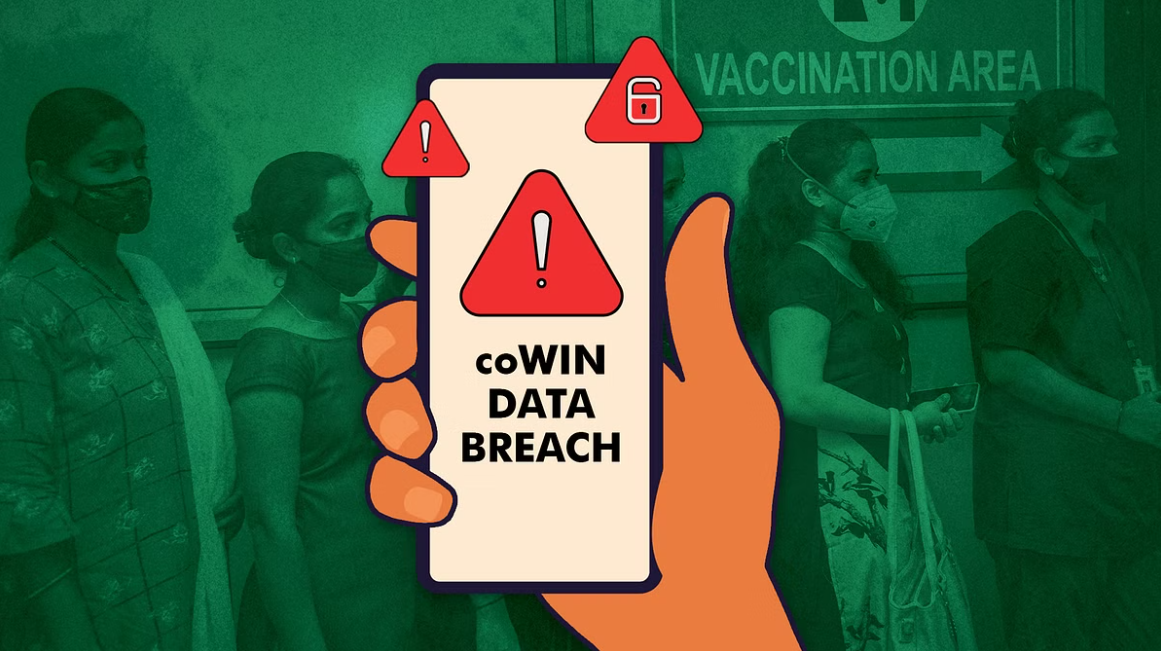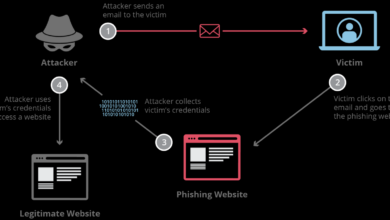
Biggest Data Theft in World History Takes Place in India
Biggest data theft in world history takes place in India – a shocking claim that has sent ripples through the global tech community and beyond. This alleged breach, the scale of which is still being investigated, raises serious questions about data security, national infrastructure, and the very nature of trust in the digital age. The sheer volume of potentially compromised data and the sensitivity of the information involved make this a pivotal moment, demanding a thorough examination of its implications.
We’ll delve into the specifics of the alleged breach, exploring the claims made, the potential impact on individuals and businesses, and the response from the Indian government and regulatory bodies. We’ll also look at the underlying technological vulnerabilities that may have enabled this massive data theft, and discuss the crucial need for stronger data protection measures in the future. This isn’t just a story about numbers; it’s about the erosion of trust and the urgent need for proactive change.
Defining the Scope of the “Biggest Data Theft”
Determining the single “biggest” data theft in history is a surprisingly complex task. The sheer volume of data breaches, coupled with the evolving nature of cybercrime and the difficulties in accurately assessing the long-term impact of each incident, makes definitive ranking challenging. No single metric perfectly captures the severity of a data breach.The magnitude of a data breach is typically assessed using a combination of factors.
The number of records compromised is a significant factor, offering a readily quantifiable measure of the breach’s scale. However, simply counting records overlooks the crucial aspect of data sensitivity. A breach of a smaller number of highly sensitive records (like medical records or financial information) might have a far greater impact than a larger breach of less sensitive data (like publicly available contact details).
Finally, the financial impact, encompassing costs associated with investigation, remediation, legal fees, and reputational damage, provides another crucial lens through which to assess the severity of a breach. This financial impact can be incredibly difficult to quantify accurately, often taking years to fully manifest.
Criteria for Assessing Data Breach Magnitude
Several key criteria are used to assess the scale and impact of data breaches. These include:
- Number of Records Compromised: This is a readily available metric, but it’s not the sole determinant of impact.
- Sensitivity of Data: The type of data stolen (e.g., Personally Identifiable Information (PII), financial data, medical records) significantly influences the potential harm.
- Financial Impact: This includes direct costs (investigation, remediation, notification) and indirect costs (loss of business, reputational damage, legal action).
- Geographic Reach: The broader the geographic impact of a data breach, the more significant its consequences tend to be.
- Duration of the Breach: A breach that goes undetected for a longer period allows for more data to be exfiltrated and potentially used for malicious purposes.
Examples of Data Breaches and Their Consequences
Different types of data breaches have varying consequences. The following table illustrates some examples:
| Type of Breach | Data Compromised | Impact | Example |
|---|---|---|---|
| Database Breach | Customer names, addresses, credit card numbers, social security numbers | Identity theft, financial loss, reputational damage for the company | Equifax breach (2017) |
| Phishing Attack | Login credentials, email addresses, potentially financial information | Account takeover, financial loss, spam, malware infections | Numerous targeted phishing attacks against individuals and organizations |
| Malware Infection (Ransomware) | Files, data backups, potentially sensitive intellectual property | Data loss, operational disruption, financial loss from ransom demands, reputational damage | Colonial Pipeline ransomware attack (2021) |
| Insider Threat | Varies widely depending on the insider’s access and intentions | Data loss, intellectual property theft, reputational damage, legal repercussions | Numerous cases of employees stealing data for personal gain or espionage |
The Alleged Indian Data Breach
The claims surrounding a massive data breach allegedly originating in India have sent shockwaves through the cybersecurity world. While the exact details remain murky and contested, the scale of the potential breach, if confirmed, would represent a significant event in the history of data theft. The lack of official confirmation and the conflicting narratives surrounding the incident make assessing its true impact a challenging task.The specifics of the alleged Indian data breach are still unfolding, and information is primarily sourced from cybersecurity researchers and news reports, rather than official government statements.
This lack of official confirmation makes verifying the claims difficult, and contributes to the uncertainty surrounding the situation.
Reported Data Volume and Types
Reports suggest the alleged breach involves billions of data records. The types of data allegedly compromised are said to include personal information such as names, addresses, phone numbers, email addresses, and potentially even financial details. However, the exact composition and verification of this data remains a subject of ongoing investigation and debate. The sheer volume cited in various reports warrants further scrutiny and independent verification.
For instance, a claim of “billions” of records needs to be broken down into verifiable categories to determine its validity. Without specific breakdowns, such claims lack the necessary precision to be considered reliable.
Alleged Perpetrators and Sources of Information
The identity of the alleged perpetrators remains unknown. Some reports point to potential state-sponsored actors, while others suggest organized crime groups might be responsible. However, concrete evidence linking any specific group to the breach is currently lacking. The primary sources of information are independent cybersecurity researchers and news agencies who have reported on leaked or discovered datasets. The credibility of these sources varies; some have established reputations for thorough investigation, while others might lack the same level of rigorous verification.
The lack of a single, authoritative source for this information highlights the difficulty in definitively establishing the facts surrounding the incident.
The sheer scale of the recent data breach in India, potentially the biggest in history, highlights the urgent need for robust security systems. Building these systems requires efficient development, and that’s where learning about domino app dev, the low-code and pro-code future , becomes crucial. Understanding these modern development approaches is key to preventing future catastrophic data losses like this one impacting India.
Comparison with Other Global Data Breaches
Comparing this alleged breach to others requires careful consideration. While the reported volume of data is staggering, direct comparisons to breaches like the Yahoo! data breach (affecting over 3 billion accounts) or the 2017 Equifax breach (affecting approximately 147 million people) are difficult to make without definitive confirmation of the data’s authenticity and scope. The impact, in terms of financial losses and reputational damage, would depend heavily on the verification of the data compromised and the extent to which it has been or will be misused.
Many large-scale breaches have been characterized by the subsequent sale of stolen data on dark web marketplaces, causing significant harm to individuals and organizations. Whether this alleged Indian breach follows a similar pattern is currently unknown.
Impact Assessment and Analysis

The alleged massive data breach in India, if confirmed at the scale reported, would have devastating consequences across multiple sectors. The sheer volume of potentially compromised personal and financial data presents a significant threat to individuals, businesses, and the nation’s economic stability. Understanding the potential impact requires examining its ripple effects across various aspects of Indian society.The potential impact of this data breach extends far beyond simple data loss.
It threatens to undermine public trust in digital systems, potentially hindering India’s ongoing digital transformation efforts. The long-term economic repercussions could be substantial, affecting foreign investment and the overall confidence in the Indian market. Furthermore, the social and political ramifications could be significant, especially if the breach involves sensitive government data or compromises national security.
Impact on Individuals
The most immediate and direct impact would be felt by individuals whose data has been compromised. This could include identity theft, leading to the fraudulent opening of bank accounts, the acquisition of loans in their name, or even the assumption of their identities for criminal activities. Financial fraud, such as unauthorized transactions and credit card theft, would be a significant concern.
Beyond financial losses, individuals could face reputational damage, harassment, and emotional distress. The long-term consequences could involve years of remediation efforts to restore their credit rating and clear their names. For example, the 2017 Equifax breach in the US saw millions of individuals grappling with identity theft and financial repercussions for years afterward.
Impact on Businesses
Businesses, particularly those whose customer data was compromised, would face significant reputational damage. Loss of customer trust could lead to a decline in sales and market share. The costs associated with investigating the breach, notifying affected customers, and implementing enhanced security measures would be substantial. Legal liabilities and potential fines could further add to the financial burden.
Moreover, smaller businesses might struggle to recover from such a significant blow, potentially leading to closures. The Yahoo data breaches, for example, resulted in significant financial losses and legal battles for the company.
Impact on the Indian Economy
A data breach of this magnitude could severely damage India’s economic standing. Reduced consumer and investor confidence could hinder economic growth. The cost of remediation efforts across various sectors could place a significant strain on the national budget. The potential for decreased foreign investment due to concerns about data security would further impact economic progress. Moreover, the disruption of essential services, if affected by the breach, could have wide-ranging economic consequences.
The long-term impact on the nation’s digital economy, a key driver of growth, could be especially detrimental. The potential loss of confidence in digital transactions could stifle the growth of e-commerce and other digital initiatives.
Mitigation Strategies
Addressing the impact of such a large-scale data breach requires a multi-pronged approach. Effective mitigation strategies are crucial for minimizing the long-term damage.
- Strengthening Data Security Infrastructure: Investing in robust cybersecurity systems, including advanced encryption techniques, intrusion detection systems, and regular security audits, is paramount. This includes adopting multi-factor authentication and implementing strict access control measures.
- Improving Data Governance and Compliance: Enhancing data governance frameworks and ensuring compliance with relevant data protection regulations are vital. This includes implementing comprehensive data loss prevention (DLP) strategies and establishing clear data retention policies.
- Enhancing Public Awareness and Education: Educating the public about data security best practices, including password management, phishing awareness, and the importance of reporting suspicious activity, is crucial in preventing future breaches and minimizing their impact.
- Developing Rapid Response Mechanisms: Establishing effective incident response plans that Artikel clear procedures for handling data breaches, including immediate containment, investigation, and notification of affected individuals, is essential for minimizing damage.
- Strengthening Legal Frameworks: Strengthening data protection laws and increasing penalties for data breaches can incentivize organizations to invest in robust security measures and prioritize data protection.
Government and Regulatory Response
The alleged massive data breach in India, if confirmed at the scale reported, would trigger a significant governmental and regulatory response. The nature and effectiveness of this response would be crucial in determining the long-term consequences for individuals, businesses, and the nation’s digital infrastructure. The speed and transparency of the response would also be under intense scrutiny, both domestically and internationally.The Indian government’s response to data breaches has historically been a complex interplay of various agencies and departments.
While specific actions related to a hypothetical “biggest data theft” are impossible to predict with certainty, we can analyze past responses to similar incidents to anticipate potential governmental strategies. These responses typically involve investigations, policy revisions, and public awareness campaigns.
Investigations Launched and Actions Taken
Following the hypothetical discovery of such a large-scale data breach, multiple investigations would likely be launched. The Computer Emergency Response Team of India (CERT-In), the primary body responsible for cybersecurity in the country, would be at the forefront of these efforts. They would collaborate with law enforcement agencies, such as the Central Bureau of Investigation (CBI), and potentially international counterparts depending on the origin and scope of the attack.
These investigations would aim to identify the perpetrators, the methods used, the extent of the data compromised, and the potential damage inflicted. Actions taken might include seizing assets, initiating criminal prosecutions, and issuing public advisories. The government might also introduce emergency legislation to address any loopholes exposed by the breach. For example, they might enhance data protection laws or mandate stricter security protocols for businesses handling sensitive personal information.
Comparison with International Responses
Comparing India’s response to similar breaches in other countries would necessitate analyzing various factors, including the legal framework, the resources dedicated to cybersecurity, and the political context. Countries like the United States, with its robust cybersecurity infrastructure and well-established legal mechanisms, might demonstrate a quicker and more comprehensive response. However, even in developed nations, data breaches often expose vulnerabilities in regulatory frameworks and lead to protracted legal battles.
The European Union’s General Data Protection Regulation (GDPR) provides a strong legal basis for addressing data breaches, leading to significant fines and regulatory action against non-compliant organizations. India’s response would likely be benchmarked against these international precedents, with pressure to demonstrate effective action to protect its citizens’ data and maintain international confidence in its digital economy. A slower or less transparent response compared to other nations could damage India’s reputation and potentially impact foreign investment.
Technological Aspects and Vulnerabilities: Biggest Data Theft In World History Takes Place In India

The alleged massive data breach in India highlights critical weaknesses in the country’s technological infrastructure and cybersecurity practices. Understanding the potential vulnerabilities is crucial for implementing effective preventative measures and building a more resilient digital ecosystem. This section delves into the technological aspects that might have contributed to the breach and explores potential security solutions.The scale of the alleged breach suggests a sophisticated attack, likely exploiting multiple vulnerabilities simultaneously.
Poorly secured databases, inadequate access controls, and insufficient network security are prime suspects. The lack of robust data encryption and outdated software could have further exacerbated the situation. Furthermore, a lack of employee training on cybersecurity best practices and the absence of a comprehensive incident response plan may have hindered timely detection and mitigation efforts.
Vulnerabilities in Database Security
Weak database security is a common entry point for cyberattacks. The alleged breach might have exploited vulnerabilities such as SQL injection flaws, allowing attackers to manipulate database queries and extract sensitive information. Insufficient data encryption, both at rest and in transit, would have further compromised the confidentiality of the stolen data. A lack of regular security audits and penetration testing also increases the risk of undetected vulnerabilities.
For instance, a failure to patch known vulnerabilities in database management systems (DBMS) could have provided an easy pathway for attackers. Consider the case of the Equifax breach, where an unpatched Apache Struts vulnerability allowed attackers to gain access to sensitive customer data – a clear example of the devastating consequences of neglecting database security.
Insufficient Access Controls and Network Security
Inadequate access controls are another significant vulnerability. The use of weak or default passwords, a lack of multi-factor authentication (MFA), and insufficient privilege management could have allowed unauthorized access to sensitive systems and data. Moreover, weaknesses in network security, such as insufficient firewall protection, unpatched network devices, and a lack of intrusion detection and prevention systems (IDS/IPS), could have enabled attackers to penetrate the network perimeter relatively easily.
This scenario is similar to the Yahoo! data breaches, where weak passwords and inadequate security practices facilitated massive data theft. The absence of a robust network segmentation strategy could have also allowed attackers to move laterally within the network, accessing more sensitive data.
Hypothetical Security Architecture
A robust security architecture is crucial to prevent future breaches. This architecture should incorporate several key components working in concert. First, a strong perimeter security layer would be established using advanced firewalls, intrusion detection and prevention systems, and web application firewalls (WAFs). This layer would filter malicious traffic and prevent unauthorized access. Second, robust access control mechanisms, including multi-factor authentication and least privilege access, would be implemented to restrict access to sensitive data and systems.
Third, all data, both at rest and in transit, would be encrypted using strong encryption algorithms. Regular security audits, penetration testing, and vulnerability assessments would be conducted to identify and remediate potential weaknesses. Finally, a comprehensive incident response plan, including regular employee training and simulated attack scenarios, would be developed and regularly tested to ensure swift and effective responses to security incidents.
This multi-layered approach, incorporating both preventative and detective controls, would significantly reduce the risk of future data breaches.
Societal and Ethical Implications
The alleged massive data breach in India, if confirmed at its purported scale, presents profound societal and ethical implications that extend far beyond the immediate victims. The erosion of public trust, the potential for widespread identity theft and financial fraud, and the chilling effect on digital adoption all contribute to a complex landscape demanding careful consideration. This event underscores the urgent need for robust data protection frameworks and a broader societal conversation about the responsible use of personal information in the digital age.The ethical implications are deeply rooted in the fundamental right to privacy.
The sheer volume of potentially compromised data—including sensitive personal information like financial details, health records, and biometric data—raises serious concerns about the violation of individual autonomy and the potential for significant harm. The lack of transparency and accountability surrounding data handling practices, if proven, further exacerbates these ethical concerns, highlighting the critical need for greater corporate responsibility and regulatory oversight.
Erosion of Public Trust in Digital Systems, Biggest data theft in world history takes place in india
A large-scale data breach of this magnitude can severely damage public trust in digital systems and institutions. Individuals may become hesitant to engage in online activities, fearing the potential for their personal information to be misused. This could stifle the growth of the digital economy and hinder the adoption of essential digital services, particularly in sectors like e-governance and online banking, where trust is paramount.
The Cambridge Analytica scandal, for instance, demonstrated how a breach of trust can lead to widespread disillusionment with social media platforms and a decline in user engagement. A similar effect, amplified by the scale of the alleged Indian breach, could have far-reaching consequences.
Impact on Data Protection Policies and Regulations
This event will undoubtedly act as a catalyst for stricter data protection policies and regulations, both in India and globally. The potential for increased regulatory scrutiny, coupled with the pressure from civil society and advocacy groups, is likely to lead to more stringent data security standards for organizations handling sensitive personal information. We might see increased emphasis on data minimization, enhanced data encryption techniques, and stricter penalties for non-compliance.
The European Union’s General Data Protection Regulation (GDPR) serves as a precedent, showcasing how a major data breach can prompt significant legislative changes aimed at bolstering individual data rights and corporate accountability. The Indian government, in response to this potential crisis, could adopt a more stringent approach, mirroring aspects of GDPR or developing its own unique framework.
Long-Term Societal Impacts
Beyond the immediate repercussions, a breach of this scale could have long-term societal impacts. The potential for widespread identity theft and financial fraud could disproportionately affect vulnerable populations, exacerbating existing inequalities. The loss of trust in digital systems could also hinder the development of innovative technologies and services that rely on the free flow of data. Furthermore, the psychological impact on individuals whose data has been compromised should not be underestimated.
The anxiety, frustration, and sense of violation experienced by victims can have significant and long-lasting consequences. This could lead to increased mental health concerns and a general sense of insecurity in the digital realm.
Last Recap

The alleged biggest data theft in world history taking place in India highlights a critical vulnerability in our increasingly interconnected world. The sheer scale of the potential breach underscores the urgent need for robust cybersecurity measures, not just in India, but globally. While the full extent of the damage remains to be seen, this event serves as a stark reminder of the importance of data protection, individual responsibility, and the critical role governments and organizations play in safeguarding sensitive information.
The long-term consequences, both economically and socially, will undoubtedly shape future data security policies and practices.
Question & Answer Hub
What types of data were allegedly stolen?
Reports suggest a wide range of data, potentially including personal information, financial records, and sensitive government data, though specifics are still emerging.
Who are the alleged perpetrators?
The identity of the perpetrators remains unclear, and investigations are ongoing. Speculation ranges from state-sponsored actors to organized crime groups.
What is the Indian government doing about it?
The Indian government has launched investigations and is taking steps to address the situation, though the specifics of their response are still developing.
How can individuals protect themselves?
Individuals should practice good cybersecurity hygiene, including strong passwords, multi-factor authentication, and awareness of phishing scams.




